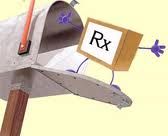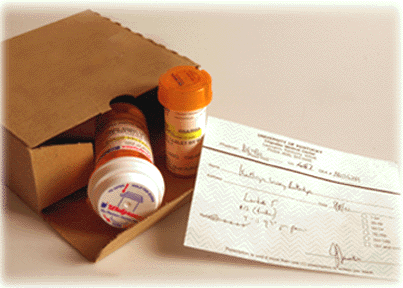IHS Pharmacy Directors: Pharmacy staff to decrease with CMOP implementation?
 I promised you an update on concerns about IHS pharmacies starting to offer central fill mail-order prescription refills through the Veteran’s Affairs Consolidated Mail Outpatient Pharmacy (CMOP) in Leavenworth, KS.
I promised you an update on concerns about IHS pharmacies starting to offer central fill mail-order prescription refills through the Veteran’s Affairs Consolidated Mail Outpatient Pharmacy (CMOP) in Leavenworth, KS.
Some concerns I heard from IHS/tribal pharmacy directors were: How would mailing prescriptions impact the current pharmacy staff? Will mailing prescriptions really be in the interest of patient care, and will every site be required to provide mail service? What about tribal pharmacies-can they get involved? Click here to find out the answers
I spoke to CAPT Pam Schweitzer, IHS-VA National CMOP Coordinator, to ask her these and other common questions about IHS mailing prescriptions and using the VA CMOP.
Read on to find out answers to some FAQs about the program and how the goals above will be met:
 Q: Is pharmacy staff expected to increase, decrease, or stay the same?
Q: Is pharmacy staff expected to increase, decrease, or stay the same?
A: The IHS sites where CMOP has been implemented so far have kept their pharmacy staff, and in some cases have increased pharmacy staff. These sites are fortunate to have good CEO support of the pharmacy department. The pharmacists will be able to spend more time reviewing a patient’s records when processing refills, performing medication reconciliation, and/or fulfilling Improving Patient Care (IPC) objectives that allow pharmacists more time to do clinical work.
Q. Wouldn’t mail-order services be worse off for patient care because the patients don’t get as frequent personal interaction, and our work may become less clinical?
A: Mailing prescriptions can increase patient compliance, especially for patients who live in remote areas and may have transportation barriers that prevent access to the pharmacy. Studies have shown that mailing prescriptions can increase patient adherence. Yet if a patient chooses to go to your pharmacy to pick up medications instead, he/she can still choose to do so. The pharmacists’ time will likely be freed up to provide more clinical services for patients, because pharmacists won’t need to be involved with filling nor verifying the prescriptions.
Q: What are the less known features of VA CMOP that will be beneficial to patient care?
A:  Patients can be provided with a 30-day supply of medications at each fill, increasing the possibility for billing and reimbursement for drug costs (especially if a site is currently dispensing 90 day supplies).
Patients can be provided with a 30-day supply of medications at each fill, increasing the possibility for billing and reimbursement for drug costs (especially if a site is currently dispensing 90 day supplies).
Patients are able to request their medication early (before the next fill is due) using a new feature in RPMS called Suspense.
Example: patient picked up medication today. He/she can request refill right now for their next fill.
Q: How will staff pharmacists’ & pharmacy technicians’ roles change due to CMOP implementation?
Staff pharmacists will still be involved with processing the refill prescriptions and will likely have more time to review the patient’s electronic record and manage medication therapy.
The pharmacy technicians’ workload of filling prescriptions will decrease, allowing more time for monitoring point-of-sale billing and inventory management. One additional duty the technicians have with CMOP is answering the phone and looking up tracking information if the patient didn’t receive their medication.
Stay tuned in a future issue to find out the rest of the answers to FAQs like whether every site will be required to use VA CMOP and what may be in store for tribal facilities. You’ll also see how CMOP would work if integrated with your pharmacy services.
Expecting pharmacy staffing needs in your IHS/tribal pharmacy? Not looking for just a warm body? Get options – select IHS-experienced pharmacists for your pharmacy
Ready to Take Action & Turn Around Your Demotivated Pharmacy Staff?
 Last month, you learned the first 3 steps to improve productivity and increase your pharmacy staff’s motivation by taking a proactive approach to the situation. Now, read on for the second stage of the process, in which you prepare and present a plan to motivate your staff to the next level.
Last month, you learned the first 3 steps to improve productivity and increase your pharmacy staff’s motivation by taking a proactive approach to the situation. Now, read on for the second stage of the process, in which you prepare and present a plan to motivate your staff to the next level.
Step 4: Give each of your staff the opportunity of completing special projects within the pharmacy and give them creative freedom to introduce it into pharmacy. These can be patient-service related, clinical, or workflow-related. Allow your staff to have ways in which they may provide ongoing suggestions (ie, a suggestion box). Take time to discuss as a team the top ones to work on next, with the input of your vision. Give your staff the autonomy to be in charge of their project. Be amazed at your staff taking ownership and having pride in what they create. Give them a sense of purpose that motivates them to do their best every day.
Step 5: Make the most of your pharmacy technicians–give your techs ownership of an area that supports you. Ideas include taking P&T meeting minutes, organizing drug files (with you doing the aspects that require clinical knowledge), and answering all phone calls unless they escalate to requiring a pharmacist. For example, in many pharmacies, when a patient asks for a pharmacist, the phone immediately gets handed to a pharmacist. Instead, train your pharmacy support staff to ask what the person is calling about, so that if they can answer the question for them, they can do so. This helps you as the pharmacist or pharmacy manager make the best use of your time. You may train your support staff to say “so that I can give him/her [pharmacist] the heads up on what to help you with, would you let me know in a nutshell what you would like help with?”
Step 6: Inspect what you expect & acknowledge accomplishments. It’s cliché, but it rings true. Consistency of performance is impossible to maintain long-term when you don’t take the time to “inspect what you expect” & continue to inspire your staff.
Taking an active approach to turn around a demotivated staff reaps great rewards in productivity, employee satisfaction, and team cohesiveness. After implementing your unique plan, watch as your pharmacy staff grows on an individual and team level. As time goes on, be sure to not let the excitement of these new responsibilities wear off. Continue to encourage your pharmacists and techs to contribute in new, creative ways.
How to Train for Retention so Pharmacists Don’t Leave
The potential government shut down last week made many people affected sweat. With steep federal budget cuts, the issue of having money to hire becomes one to be concerned about. Even if you are not affected by federal funding, budgets is the name of the game in this economy. Having to hire someone new can be costly, so retention is always the first place to look for a solution. Retaining good pharmacists starts from the very beginning-hiring and training.
One of the most common phrases I hear from pharmacy directors/managers is “I don’t want to spend a long time training a new employee.” As a result, training becomes something many pharmacy managers fly through quickly to get a new pharmacist up to speed. Yet it is the most crucial element to your new employee’s long-term success and ultimately the retention of your new hire.
Here are a few tips to implement when you train someone new:
- Set expectations – between both you and your new hire. This means not only you setting expectations for them, but them expressing their expectations and how they prefer to be managed. Determine together what the definition of success in their role would look like.
- Discuss the pharmacy’s values, vision, and mission. This is a step many pharmacy directors skip. But it is an important step for key reasons. One of the main reasons why an employer feels compelled to stay at a job is if values, vision, and mission are in alignment. Things may not be perfect, but an employee is more likely to put up with things they are dissatisfied with if they feel they are aligned with your pharmacy’s values & are empowered by your vision/mission.
 Conduct a personality assessment such as the Insights Model, so you recognize not only how they may tend to relate with others, but also their natural strengths. For example, an introvert may not openly share their successes with you, but they may be just as outstanding as an extrovert counterpart. Insights into how your pharmacy staff thinks, acts, and works can give you an edge to managing them smoothly.
Conduct a personality assessment such as the Insights Model, so you recognize not only how they may tend to relate with others, but also their natural strengths. For example, an introvert may not openly share their successes with you, but they may be just as outstanding as an extrovert counterpart. Insights into how your pharmacy staff thinks, acts, and works can give you an edge to managing them smoothly.- Find a way to communicate regularly with your new hire. Set expectations for how they can maintain channels of communication, including as a team (ie, staff meetings) and individually. Include when, how frequently, what can be brought up. For example, you may set the stage early on that when someone brings a problem, they will always come with three potential solutions. This way you don’t get constant complainers.

In an upcoming blog article, you will learn some of the best questions to ask a new hire to see how they are doing during the training period….and how to use that valuable information to retain your pharmacists.
If you have temporary coverage needs between finding out when someone is leaving and training a new hire, explore your options for IHS/tribal-experienced pharmacists to cover in the interim. Don’t waste your money on inconsistent levels of pharmacists who take more than necessary effort to train and manage.
“I Don’t Want to Spend Time Training”
This article is for Indian Health Service pharmacy directors only.
This is one of the most common comments pharmacy directors share with me, both for training new hires and relief pharmacists. A way to save you time to train is to hire slowly for the right hire and screen for pharmacists who have as many translatable skills as possible. If you have a relief pharmacist coming in, select someone with IHS experience. At the same time, there will always be new procedures and strategic direction unique only to your facility.
Training is an area that is easy to shortcut. The most common excuses are: “I don’t have time”, “Things are always changing around here; just ask other pharmacists how they will handle this.” Read more